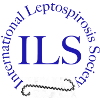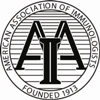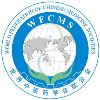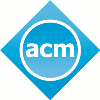- Comparative Genomics and Proteomics
- Comparative genomics deals with the comparison of the genomic features of organisms. Comparative proteomics deals with the comparison of proteins organisms.
- Immunoinformatics
- Advanced study deals with immune-related genomics and proteomics.
- Metabolic Pathway Engineering & Systems Biology
- Interlinked study by optimizing genetics and regulatory processes in metabolic pathways with complex algorithms.
- Molecular Dynamics Simulations
- Molecular dynamics (MD) is a computer simulation to study the molecular movements.
- Biodiversity Informatics
- Study to apply informatics to biodiversity advancements.
- Computational Approaches for Drug Design
- The inventive process of finding new medications based on the knowledge of a biological target.
- Genomics and Transcriptomics
- Genomics deals with structure, function, evolution, and mapping of genomes. Transcriptomics deals with transcriptomes and their functions.
- Cheminformatics
- Using computer and informational techniques for chemistry problems.
- Molecular Biotyping
- Biotype means a group of individuals having the same genotype.
- Computational Biology
- Study to use biological data in developing algorithms and relations among various biological systems.
- Mathematical Biology
- Study that defies classification into the usual categories of mathematical research.
- Biophysics
- The Science to apply the laws of physics to biological phenomena.
- Biostatistics
- Study dealing with statistical analysis of biological data.
- Molecular Phylogenetics
- Study dealing with phylogenies from molecular level.
- Molecular Modeling and Simulations
- Simulating the molecular level processes by means of advanced modeling.
- Biological Data Mining
- Acquiring knowledge from the biological databases.
- Sequence and Structural Analysis
- Analysis of sequential arrangement and structural aspects of nucleic acids with algorithms.
- Bionanotechnology
- Study to analyze the nanotechnology use in biological motifs.
- Bioinformatics
- The advanced science to deal with biological data and genetic code analysis.
- Linkage Mapping
- To map genes on a chromosome based on linkage analysis.
- Identification and Annotation
- Identification of genetic nodes on genomes and analyzing the gene functionality.
- Microarray DATA Analysis: Technique and Application
- The study form to analyze the DNA, RNA retrieved data for experiments.
- Biocomputing
- An interlinked study form of biology, computer science, and engineering.
- Database Management
- Managing the database to capture and analyze data.
- All submissions will undergo vigorous peer review process.
- High quality review process.
- Permanent published archives.
- Author loyal benefits.
- Reviewer credits.
- Visible specified citations.
- Open access - Maximum dissemination.
- Un-interrupted author communication.
- Standard author guidelines.
- Minimal publication charges with convenient and safe modes of transfer.
Editors are the main deciding people for Enliven Archive journals. According to the editors’ guidelines and interests, any amendments and updates will be made to the journals.
Journal editors are classified in to different categories based on the profiles. The roles and responsibilities of editors will differ for each category. To manage the journal and to have a transparent flow of work, journal sets the categories and responsibilities as per the categories.
Enliven Archive supports the statements of “Council of Science Editors”: https://www.councilscienceeditors.org/
Propose a New Journal with Enliven Archive
Enliven Archive always welcomes to join hands with any of the professionals to start a new journal with us. We are also interested in getting collaborated with any societies, institutions, universities, associations, and organizations to launch a journal on combined maintenance.
Please write us the thoughts of launching new journals to contact@enlivenarchive.org
Journal organizes the following categories of editors
1) Editor-in-Chief
2) Editorial Board Members
3) Section Editors
4) Guest Editors
5) Advisory Board Members
6) Managing Editors
1) Editor-in-Chief:
Editor-in-Chief (EIC) is the main head for the journal. EIC has all authority to make any decision as per the journal that shall increase the scope and quality of the journal. EIC is the main person to handle and assign the mission according to the vision of the journal.
The major responsibilities of EIC entail
a) Inviting distinguished members in the field of journal to join editorial board
b) Random checking any journal process to test and improve the quality of journal
c) Taking any scientific decisions according to the journal
d) Suggesting special issues and deadlines accordingly
e) Suggesting editors and contributors to issues
f) Aiding the indexing process of journals
g) Final decision for any critical submissions
2) Editorial Board Members:
Editorial board members handle the journals by executing the multiple journal related tasks as per the availability. Professors, directors, associate professors, assistant professors, and investigators shall become the journals’ editorial board members. Enliven journals trust the strength of editorial board members and believe that strength of journals depends on the editorial board members.
The major responsibilities of editorial board members entail
a) Handling the assigned two to three manuscripts per year
b) Aid in editing the special issue for the journal based on their research interests
c) Recommend the journal to peers and colleagues
d) Inviting contributors to the special issues and monthly issues
e) Providing guidelines to maintain the journal according to standards
f) Endowing the valuable suggestions to increase the quality of journals
g) Assisting in peer review process with stipulated deadlines
3) Section Editors:
To increase the scope and to maintain the legible scope for authors and readers, journal will be divided into sections and editors who are interested in the handling the sections will becomes heads for the sections.
Journal sections shall be based on the research criteria or may be based on the geographical areas. Section editors will be the main handling editors for the journal processes in their sections.
The major responsibilities of section editors entail
a) Handling about 2-3 manuscripts in the specified section
b) Proposing and maintaining the special issues for the journals
c) Promoting the journal in the sectional fields
d) Supporting the journal by inviting the contributors for the sections
e) Proposing subsections and recruiting the members as per the subsection
f) Maintaining the sectional archives to enhance the legibility of issues
4) Guest Editors:
Guest editors will be invited and their endeavors are used in the cases where editorial board members are not available to handle the duties. Guest editors’ profiles will be as same as editorial board members. Guest editors’ can allot minimal number of working hours to the journal.
Guest editors are invited to handle the special issues mostly. Guest editors can handle the special issue with all the authorities over the issues.
The major responsibilities of guest editors entail
a) Handling the special issues/regular issues as per the commitment
b) Inviting contributors for the handling special issues
c) Aid in review process of committed submissions
d) Suggest the changes for the handling processes/issues
e) Guide the handling tasks according to improve the standards of the journal
5) Advisory Board Members:
Advisory board members help the journal by providing reliable timely suggestions and guidelines to improve the standards of the journal. Advisory board members do not involve in any of the journals’ processing rather providing the guidelines for the journals.
The major responsibilities of advisory board members entail
a) Providing latest updates and suggestions to journals
b) Promote journal in the research groups and fields of them
c) Invite any professionals to enhance the standards of the journal
d) Aid in collaborations and memberships with organizations and institutes
e) Support journals with required strategies
6) Managing Editors
Managing editors manage and handle the journals according to the guidelines and instructions from all other categories. Managing editors stay in continuous contact with all journals’ related processes. Managing editors handle the journal and support the tasks and jobs assigned by editors. The main platform for all the journal related individuals will be handled by managing editors.
The major responsibilities of the managing editors entail
a) Handling the journal according to the editors’ suggestions
b) Assigning and processing the submissions timely
c) Supporting and assisting editorial board members, EIC to accomplish their responsibilities
d) Communicating with all journal related individuals to avoid communication lapses
e) Maintain the journals with standards and accompany editorial office for any updates
f) Authenticate the campaigns with the permission from editors
g) Process the queries and requests for journals
h) Assist the editors for any prescribed jobs and fulfill the same according to the time lines
A.Wilson Aruni





Agnieszka A. Kaczor



Deepak Kumar






Feng Feng



George D Geromichalos

Jason T. L. Wang
Xiaohui Fan




